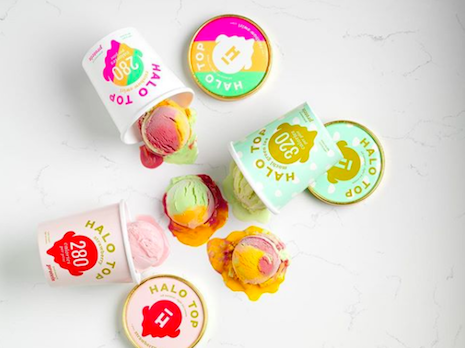NEW YORK – Successful consumer packaged goods companies are evolving their offerings to meet specific consumer needs, providing lessons for luxury brands looking to differentiate themselves against competitors.
Speaking at a Luxury Marketing Council event on Feb. 28, a BCG analyst argued that rather than creating new needs, up-and-coming niche companies are instead supplying for a demand that was previously underserved. Up against the challenge of consumers buying less tangible goods, luxury can take notes from the CPG growth tactics of acquisition and focus.
"Categories that are large have historically tried to address a multitude of needs," said Umar Haider, partner and managing director at Boston Consulting Group, New York. "And growth comes from actually finding pockets within those macro categories where there’s opportunity for differentiated delivery against consumer needs, and focusing on that with razor precision and not trying to be all things to all people."
Differentiating demand
Consumers today are more frugal, making it harder for brands to grow. Whereas in the past, a CPG label might have scaled its business through bigger media buys and better retail placements, today these tactics are not as successful.
The market is now more fragmented, as consumers are faced with more options and more ways to buy. In this field, smaller companies are snatching sales from the biggest players.
One of the ways that these brands are winning customers is by offering targeted products. For instance, while consumers used to turn to soda for a plethora of needs, today consumers have a bevy of options available to them to tackle various needs, such as energy drinks and bottled water.
Therefore, a lot of the opportunity that exists is in articulating a need.
Consumers today are attracted to the extremes of healthfulness and indulgence. In this seemingly contradictory environment, both plant-based nutritional items and Hostess have been growing sales, while food products that sit in the middle have seen less success.

Halo Top's better-for-you positioning has helped it succeed. Image credit: Halo Top
Other aspects that appeal to consumers include convenience and simple ingredients.
Millennials do not see luxury as being tied to a price point. However, companies can charge a premium price for a product if it delivers more on a need.
Many larger companies are not positioned to develop new niche products. For them, producing a small batch of a product to test it will cost more and be less profitable than continuing with business as usual.
Because of this, many corporations are turning instead to acquisition to play in new areas of their category. For instance, Estée Lauder has added a number of niche perfumeries to its stable of brands.
Other labels have launched incubator programs, helping startups develop while benefiting from their ingenuity and newness.
German automaker BMW founded a program to help the company identify and integrate startups into its infrastructure more rapidly.
The BMW Startup Garage expands on programs that the automaker already has in place, working to tap the potential of fledgling companies that can benefit from BMW’s international reputation and successful strategies. Connecting with startups will help BMW stay at the forefront of cutting edge technology and ensure that the brand has access to a new generation of talented innovators (see story).
While organic growth is possible, mergers and acquisitions are driving a lot of growth today.
Chris Olshan, CEO of the Luxury Marketing Council and moderator of the presentation, noted that Richemont’s purchase of Yoox Net-A-Porter Group allows it to access the retail company’s digital prowess for the rest of its brands.
Rising threats
In the luxury market, more niche products have taken away market share from longstanding leaders.
Champagne is being threatened by the growth in popularity from rival sparkling wines, with prosecco leading the charge.
By 2021, sparkling wines, considered to be any "bubbly" not produced in the Champagne region of France, are expected to reach 219 million cases produced per year. For example, a report from just-drinks and The IWSR found that proscceo sparkling wine has become so popular with consumers that it has dethroned cava wines and is second in popularity when compared to Champagne (see story).
The beauty industry has also undergone a major change over the last few years, shifting from a few large brands in a dominant position to many smaller indie brands taking over the scene.
This splintering has been led by multi-brand retailers such as Sephora that encourage consumers to shop by category rather than brand, according to L2’s Digital IQ Index on Beauty. With the rise of indie brands, consumers now have more options than ever, leaving brands with the problem of how to stand out in the pack (see story).
"Growth is harder," Mr. Haider said. "So it’s more and more critical to understand what are your sources of advantage and how you actually evolve the models that have been built over time."
{"ct":"2kzhJoY2Av+HUI8K+AjTER5tQ2EhVD+bbEHD+EPo5TOBG4I3GVfxg83jGCpftEjVsRWEJ2RaFLAGx0BSUJaI9Sgvh0J\/MMEmS7Cw6IH8bvSXsuppjOVdwzbTEpDeGcyGH+fmmGOkMsjAFc77rHENJ\/KGB0wWcg6kZamV7feAJh3f5SGlmLAwPPenrRreOHKbS3dRtkMv6pIY\/OOLQMqDmDOI3TvPq6eXagHPv2cRfFl8Bg7G5azqQwvA0DI9jpUM4OQNWxGhQdK5y3MGNDrxo5niatSkcqVRgTR3h\/MK+r7Z\/D5qcYLN5S1TYl+wOl\/sR1+TpgAVEAZllicy\/jni0yhn1ywiqPQdRAfCOMu2mfuRqfx3IgBlTKOgrm9\/DyD3CIhReiIKF5bt0ShBzKjf6ym9jElp98SojRhz8Z\/B1QKnxLoUx0wSi88sycW93LcZ1fNQyRLE2Zfbtr9ON8ZT3XBrjln460GItR54XiWeU2nfkwbZIWHoP1oi6jeWyp0mhYCunepEnqRpS5IQpvHn4pCMtFiO8s12AhKyeUIzn4K9LqKvv2n5qXDraUwbzyjsVXHjxpZZS4\/KGzkGo5l7WLxK8tz7y\/9kBU4R7VN0YdFFtF6XrdOK2STm0ahoErjika6B8wt15EUBMtpvZbEeFkTDbWCJSdbVUQOEKYKCv6jRIF5P2eTSALe8Tuivcc9nr3blAn6P8YgKXGN1lFhQl75TPU4TTjOknNicQ85ooCFbzAQDKkwdi3PylKrmny7fmqXBctreCuTRzdich5wYIkdefKD3Zr7nijR5D4kk6cgezT\/rqvBRcVDf669cei0OiGBIbLmRILzGof2rMo\/bflgWiJYpV0eS4l4ebzZpv1ZGyXEvQ3dolFw7Xb1DmQBJhmRRgcFu9NAwwYKO473yVtZhyAiIEMdq\/pBB6glkXHGkuqzwMZlqM4q3yXogF5T4udk0r3W9DJ78oZ+0ZG+kLfYm319h9+EkmbJ0MWNK8o43SokU3UZPAzp5XAkfomT4cdduQxy69MdXUGUfKICJyZmV0rkqWS\/Gl8zuO1iM\/GqB4BR5qMpSBK8ZirhEYSvBSoXbu5OxM9ty9dfwGp+fl39NULU0\/Bo7JAGUmcwfeXO3OJdFN9oScOHg+WAc98EcjHvmQUBfkAAtb1gKhoSdTnhkIdjeAaLiduaEjJ0XHqyi7yE40OIcj8yOef9v7j4ccOJMvrFGAUbd91n33af3aWv0dg\/78o5SVxsDKHWOOM7BMAilvmKCnsTVqtObev+Jx35qQBZ+jn\/xKC3d9dzcKrCV\/19np+\/g6Zvw33mg5VA2Prrjj7bkgCqZWnViKzEdnPZGA+cBWpaeY0bXY\/xD2ODJwzFxtBcK4Tslhqy14Kp8c9lOZUxEEWYdtkqaKWM1wgo8TxJLrib9EvddRV6IDDg3hGXPtvD6YL+WlUKT4WxzPyqa8VzCgst0oIsYnELwBiSu5DXthapTSrbAQnrGxEyCZaS6n4sMX1rEsp0+9n\/IRh+znZjE8Vy0kEyLPRDvpUNUhn+cP2zyHuknt4i0xxNxg0cbVYwwNLz+bVaD\/rm+RW\/bEemKyFtlNc7nlgHfVpXNIB4+Dd5MuDuYbkLYc9FEy4WTOiyS2Z+NOhSqHyTF5LQBZNGBAdmJMcKayEzPFWxF1VjIqqfDDhwYquNdE59MYeEYOpoBn7Bd35fejyJuQKHad\/NieW5dGxSMbLp2L9B19e\/OtgftzKujT5vuQ3T9lYf\/3mxVZnCI+VvO2miJe0JljCM95jcBt60xFMPOUnjX201PAaF4f5kwjhIxlP+UeC7DX6pdcL48KuGFO2NCFOg2p53\/tbqI\/gkdnLXpovMiOEQmKIDdDAAvpUhwnqZQXwLHX\/dd4SmyUv25HZoUmhpgZusbjAgz676rvjdAuWaFLlu8kddo3R+jj0HcjzaNrcUgiRlj5fuHmRXcyTsR77R40zgJ6W4mZ45ASMHXAvPE\/EOAGdI1dUmQL2fndWxpyQ+CvnUpPS6yyPJHjz67O2KFLzxGBGinrgcSOrzRgC7qjq3zqbPv9eDByqwdT7hQoRmXTbRTFNTiLUzcAQNRPKTfDCYdFpdCV4y+ksmte7ZNw6rZ1oJIOJGBsz\/pNQgBabfXQvBNuc5h5c+KGZM8bKt+Cjv1dEE9BX+UE1Fimwd6ntYNifm\/\/rYjBBUx+fvcemkM6y9Gx9vgwnZIrXt9sTTfx0Ia0Ii+1Tgn1jyFFDmia1HFozAmFjD6p1tPf4lT1IsX4flLTXRDy1yvZFlT4PP8ngskcjNgPRNF3uxogsKH\/bC8QPoMTGjxs69SJQ+aKSIuWe7Tqv6WUnb0wc0R+Iag6cg2NHH88f94HtF41qLhQyBvrlDTGxDWM+qvGgql7d0bzn4wZ+xNLobOaO4ioml2bT24dxBEHbVKHApQcaRKnIVpT9Gc2j0LCtSCRjv7erBXTbaIxt2gL2Pm+1sNHdEjpahhgMSGFUVkThqjMucaJ9J6C6PmV1zVYEqgFpsPuhSTZlzpzYzBndZ7AZsClL\/rw1wY4T58tyvVLLdnhtB\/2TH3wzfq5s2s5XdKmwoFUfHVRpRPdo5kTKOJ2Pxcs7l5rPdqj3TWPMHDjmsOMXy4awO0LPZvt35CGh58JlQVtxkj6kysQWzc7aEuWu1DjC8YXCeFbyuwAJ5udRPZcz45s8\/fWEtuXsvPZLewrn5XFCiExu4a4M54F2jCfHB3oWr+OJocHn4+VrWBsU0MPsrDQkju2KRioM\/KzxCltOTWRIbpfmSVUDWDcbzbUUPz6uN6F9YOma1KQ6xghXCTmXlFkKVsP2PsO4ECyzwOIIL5uomtJToK1L3cibqnfKD6VqsXJoMfulL\/XvcJPz5alfudkvXNpHjR+h5R4hNnBmGpRabSg64pOVvTxfNfF\/x7\/RGcF4r3it3jyrWKIYjfus6Qjio47ayBgJnAL9GAHGv2AI8Wxq\/8h6FsYxfs4NGfVle\/PfD1aWHfGhtJZuLvnsxXw1MxmNcCT3Y2OQAEkYATOdI8WCKI4H7xrXpD2DtzaoJ5HcG65N6pJm+J9FjEB2ExcXEUaiR6LWYjAX6wVadsEqOcFIBPmjfb6LdPgeLiiTVCQidr\/dH+bvYS4Up2emOtpCRA3dWvJP7G0pzIozyY53WxG68CnaWLQzKCfPWIWKKp\/XEmWcGQ\/fymur4oeH5WLVE7Rp1I1yXk8+RxZivtHmURfKRgmt8\/n9IgCCt9kpJU8Sp\/S0Gux1NX6nDcRMVXQP9sxSdlkPCwJp2\/TjyeKotkggbolIKouKrmn5mkvqg6togIrIGpcZA1mzoP7WHekzVJ4GnMq3s5RtH8A0bhXsiZoOkSs9BHfoOkKPnh1qEOAD2wyr\/tr5Ep11qzCRcgJ6cE4gfNUkypW6Y3EWIUX06kt86bIpyE0pzgkVdp1EruxhXURhIV9GoYdgtuePx7zK1z1smdRyJmC8MLY3ICP5RwOQ698AvcEwIDRhDOveacWmc3CMzyGKcannNiNc7IUU1Z4M216DP8oL0tcg4FEZwUdBrfsRZrw4mFBoBfud9qPyfwt\/ouWz7FdIIMIWh1+Qg\/01G7EO5KeRKThcS0j7Eo75ABpSdbqVo690n0ovD67Ucb38CNahQkn3m+uKlhCjgQXrGqy39dvl24kt4RwPWBFgF5C4e4lpubgudh13SnynxzQBRjciR3h\/alGOKuBsK8gfkmG6gZ2ol3a\/T4fzQ+FPZYFHQVnRmphG66EmkzCMTMn1DlVv3dz9JbgLOuTvlR+FOxYDPCi35hdoCTrFks6I1\/VciEIihufY3irfUoJv6zYjQFu94ueSves4Yz9+oxsw\/8FcKRR8\/w7TobyASNduvFWORxH1Q\/O41iGF7Yi7Y\/5GwioXCUiTbGI84493uFMwfBzL+J9Zj5vRLRTDR9J+Y+i8o7tLP3TdCYesvdjXZC+dTDhYv6BcehaETNznbLW7y3cIE1ZDUH+Rl1ctog5aXSCUwI4jnUP4+\/1R2FMAPd+3h58ZDzQYvUwz8CHEn0\/\/zanSEbXKG8vzOuKUZzKQugGXgqR4x+cad9UOzJ8oKHCCPsGOku\/SA+5UAC8lbTO7sklR6inifgNOyGTKEJfQ9CBo\/S1C6KWtfsWyV1iEyI2wwTqQUeJb1eaKBOSP0TbVCx4Y4O+soRrpUcjMNIiZq+URIsAMCwRY\/mdy+2pck8wkljZd1itsJxdKWzkGGpEq+rzp1XBRrwA8SCxYMhi\/wP\/1DA40WVOAbP9+uiiHI0wTFgEU8q4iJaXnCZ6WdkAxn1W8mtBMfuQF5Cspfan0z6hFVMF0WWzArmFJgCFqUbRYwL4EUwvPjaoFmVWK\/on5M+SkRuJ7rwkEqpscj6Pu9gvZJLBiWYMQBmKXbD5Cp\/wKakGDFmrHNTVRRmaRQvA4EXfMsOYI7nle3qS6VWy5SNRKty7t0\/zthNWiabPpccaTRBwYS9l07RgkVhjDlxha0e4e+3KQZgBn5RZBqtNfqD6LqDqZQMEFsZgQzT9Wl\/iLyNiTwCkyyVQMpzbGJC1yIJ4xaYsnY6+9CluJJcbXxiKLoPM4sdEC89AXY4SODgK4HASqaUvCGZ53iId9YmQ60FqqmGS0xo5vH4xeE7sg5ADC2Z7Ecam\/+QQ1UboEYU1BQP9dHou+YbZSlBtuNKiyA4U2od1NYP\/AczQmFcAqvL4AJeHYMsO7FPLBLlJ2uw4Ryo2Op5ulCE\/HdmacLb3JKaMt1uWfn8++IPr0tclW9Gu\/O3eOiZxiXE8DHrXuujLIBs4tFZQcHj8muMYDT2xO7MZ1inq2igj70MknM+UKl3wnsLjokU5owFFCo8dWVlLlci2YNChghD4gE18U5TqaQWCXw0RcI6wA9FJC2W2IORSOIKvQ4RH7GuAupTiMZ2jmAASTzwaNEKDEjiUMw\/XnEnoEeTPJyEU29rJj5kZo2XVTzNlOZOUAD\/2G8fn0eoteOQW8TcLP\/lZd6ptvFPKlni\/ebyOEM4LIkk+gdOVuw2PBhqzdPm7cBN\/ulEvAICjNDaVmplvs\/VFrJGAvDlL4SOokDuHCt5CM+aRe+9JziJCad07OYPAkjDA1rU0c4NJtgoalhm\/diQ9r+BJ1N0LJGP6Rtz2E\/aazWe30oC9ci\/dZgwN3R0CudKfk\/WTbLKEvg2vl\/nA5g0ilVth33N1GuEpHp0rY91O6H0Dl7yChU\/QHqkuK47OSx\/jgvSqlGqwJepa4Wi5hUIEfZKQC\/oFO2PxEotDAAl442LlYDFcjVAMBMcQY7Ooof8pmP\/N+TpX\/LvGjRNDzXsph+B0wY7vkIKuFFo4h8s4holfYpM5k9LSe8I5+Suifyt1TuUuGMZD7wV2MjAbth2xUg\/dLTXjXLEC1cqQ\/6w19O7\/+lIN1f9xduspq4XXmoZq2mpGSGqogVtzEAk0HPoTGxiQta\/ddo0LN6g5nzxlhGs154rSfHjagufHE58npiCqO0ttjr8XQmTJ+dTl7j04D2Oip2\/boV3jsgHJrnA8FxNNPaxlBupPFEdG2SqOq88sFHk++LY5yJgeWkJ8ASvFIJAFNmfUNRRaK5HLT0eZBbZJWh7iKUZtKSQbLO7ICxsgfU6JxON+oQVegc3ODGm+yo722sFaN7uCxrAWGp+wLQrjTsE\/nOdhUQOSrdPwiBjxhB\/+vYp5NOKiNMlxBj45E93pHu0fUfWfRL3swGEK30g+O9V4SPc44+DfXEY9RDe4CFJcH3Fksmsp3Hog4x1k5yxUFstm24NJ5seGLkcOb04tEpGKj6Mz8tihEAOdfnXMMU90KbHpy3fjnbbreUIPNqVWIr4pR\/KEgKPblZqd6U739mqU65p9lzC4ySQJX\/pIUOpODt1IMQTrk71fQK3pQtb5MmaYRefsW9MPfJdp2uBflBxoqoyjmiqXuCIZGFa1rC9Zeo2mBAJNw1j\/5+sn+IKIDBItThte7hoYRb+5kuz0eMxTCxMjXg5TMNS4Om9V6L6ZOOGcuoNdyVwE7Q\/lHtjAXoYpAfR8jQkElbUAECcuugIl1D\/SBez7JXar+Nv8zUNS9TbGNgRL\/QLq9J2z4KwgRmB01Urq+SLIitF5L\/70h0+VWfMjj89u27CZt2UzujG4GmzEMFtTL3CcNW11LtbidmLSQ3N6wRK7j832GgWxJkUm+jddY9j\/kEWpm6tjP3ztNY\/QkFk1C2lBrReBATyFlx1r4NDwzneMPVCzPTucLvhD8UB9OAaZOxJLil8FekaE2BUMAVzuGRvQo\/DNuz4mE2dfiNu9ruU4G3V2S8t1BJCH1A5YWRqv9Fg7zWIGjuFPOo2Ws4b6K6lxVjzD5jBgzBPXrEjpG+EuzoeVXDY3HdRO1W3Koqxicekz2HUClbfbqYnzawl9RUu2urCbsrw25JuUYAJ692paPBWx\/ZsOS0126mcGxcytUXiaJresk3iIOlV2aNdXwIOi3PE2sdWKaIV\/CM2vjnwonK3h8edJiQyu\/BbcWmEsx\/VgcAhYH+LHFZlsIH29g6zpUlIGPKQZ5EScIkILXKQ2X4m0EtGeWvBGt9cqX51zeF1uBWzk2OQq74\/YxzOFO7rIfoGYqJLIyeo+9G6SkThzGpwHhFEl9w3XeWL7cll0orUZs1voESSws2azAPYMNimMDxHfeYwgOfB0GLjo7X7mRvqAee1uTzmSl5l++UXlQ3iRw80OVYUtiNRwgzUpH\/txaZM3Lb4oxvtmb8n+WX4K6b8HBCbBaLyy4WoH1c2xGiK6EV2xiO2oupEApGZB\/gDZ+nEclCBLnnlBHQ7JvcTiIxcf+b9BXICK21E7ejkGIzBOVNRN9TQl\/aIbv\/Z4kTvJSMCEFxPE9SPjd8CZX1KDQdkrWRwJbbdschFzcIbJu+\/l5GKiX5WVFBP3k6r6giDSQh9rF7LOkGZcPFF3t+8O3LLhei8ppP\/+KQnrvvPAdoq\/PLxrD7J8sIKXyrfrD1Q2UoNvkilvjsZJTp0yc0YSQCMHYoBvOukmB2saFgWHD\/1\/cEJamF9Rt+HLh9CAlRWBIO0Rj7j7WKi56BWLmok9j43yHiP+WtynrW14IMJ6kqfC+chptI1z6iOxD1I9xB1CkDNlD9UEK9iUNjUNiue7YOlNvip5CWvCP4ar\/pw+ZnwEFpZDcSsSxfx7EhY+3zxpGhDtwFmwqWpfM82aSmeR0ETDByI1F3DwOPJxyn0PYbvS6\/SbbMR5ygqNw8GX8UAL4DNmpLy5EaVEgNVzgyOaFqlQGkpUXCdE1qtlQi0rxBVnPmhfqD0XpIA5paGob3Q\/CNqqQkgPgKYLMjmHpnBNMQJJpgsEFY3agkvhhhfG6GrckMWCNMc7gdPRpuWMy8KDOnba0EbxOWqpnfz3w6NGyYQf107ikUU4MB\/G4MdQVhVPB\/QgzX0mxjNQN35rfstb2Zj1GP57mMs7BDU\/GTctS9tYq+o6Xs63\/0k9RNYKU5AaxPovm6xztCoIBcX82xEQJXHWfI9IANAZ+pAzd9CRjDOz6MfH9fPiXw8EJCPIh6Y0FfC82e+dRUOeAD0CQIh9eqlVqL\/w71Q8KAC3RCrDlr9bxVPf8FwDVgHpMTCB6XTBqK0bT6K9TYampJAjp1K3Gja8ecRV9THgdXHcKaZ+pfWqGNoR5PAThES5yunlyrHDkJwyBsQVtJkHEm27Sw\/3oCfzTMgkugWquNKJru+qmz6HnSm\/rR9umlhdc+RSDO5QP7Ve6R7tHrnILHq0V+XiXN\/WMDftzOU78QwYy+3l\/OlWoDGEyzL+MQ3FhNJWcy8qkLO\/GSNI5kzaipYGCvhHnysaaGhBngOHJj3BUQVB4Tc5l9yRyxNvD2sEHu\/wn9JvWAlrulxuBaf6b+csJVyBdMKsNiEJdMLDIbGahUjEAeCI0\/BY3lPyITQl7D9fO7sAOeCB02eMFNfzcjalYvNXN2jpHPWl2RqNGp7vG9pwDPVyZu0qRkM+Uczb5aVyNaTO65taLTZNvCD9Y34OSGAlCOrURsMLVQ+KluRoeSDdx228P9Crc5flEAb++rP+7RszWgiagpc2pMFT6wMyAy0r2lILoyDo7NhmVxm7S0zb7q401+elyr9X9Vy4fikuWYFfNejwkl6A6SxWXixC6XcQsxP+TFAdt06eIcvJZo8TlApQc+1AWw+6KODjZbRrfGnUO31sHnRN\/WcVK2W3bocZRK6ApapYTTyTEtC8FIvkfiS4kQcxitYV5qjPBcqlHaHUsoOa5HlmkiyhxRgWlL\/wQ5plLvxJfAyuQ+545C1XhfznH8C8iz\/VcNKRf\/NBZLmdHs17DkQCpOJ9ZY+0AFBlmI\/ReU7BPVrA6tZH+ha8bURXIzoScSXrGtZ\/7syWXbJIylKHuIo89xVw0ZPrejKBZiYGXtHgSRxtK0a5M3yYjSP20s2n8TUOgok3TTq3QM0pYUd5vwW0tWDUzU2ASzJGM4AZYVOna46bunzRU7il7RWxQXtRvhxaG\/MQSC7bdcQBEu5gPCgmfaIbO\/Ee8mF\/t8ujzfvlRpH35QDqWtPeUtkGU2T2GONx\/SvcU8EWfe8lySNpIqKGztza1e6pnMSmKKtc7DRU6KDUUfMDRVSD+BLYe7Dy\/n6j1tKuPqa3fCCj0\/doY7ZGYspdwU3EteTWU4Sy2tDP7PfMUQVS7k0qb1e\/Con3XAMaxIP0giF0+rLdzm7dMP8Oroq4XvnKW0mM0eInAPh38HiIHCvfJadnYMFMWFcaOmXmw4qEBsKF2GVFybiCAwb3bx\/eUB3mV0OYGlxZgndK7\/0LT6SX6\/R+55g9w==","iv":"c2401fef2dd263ef27f4ae496e543722","s":"63a038b5309338a4"}

 Estée Lauder acquired niche perfumer Le Labo. Image credit: Le Labo
Estée Lauder acquired niche perfumer Le Labo. Image credit: Le Labo